Match the species in Column I with the type of hybrid orbitals in Column II.
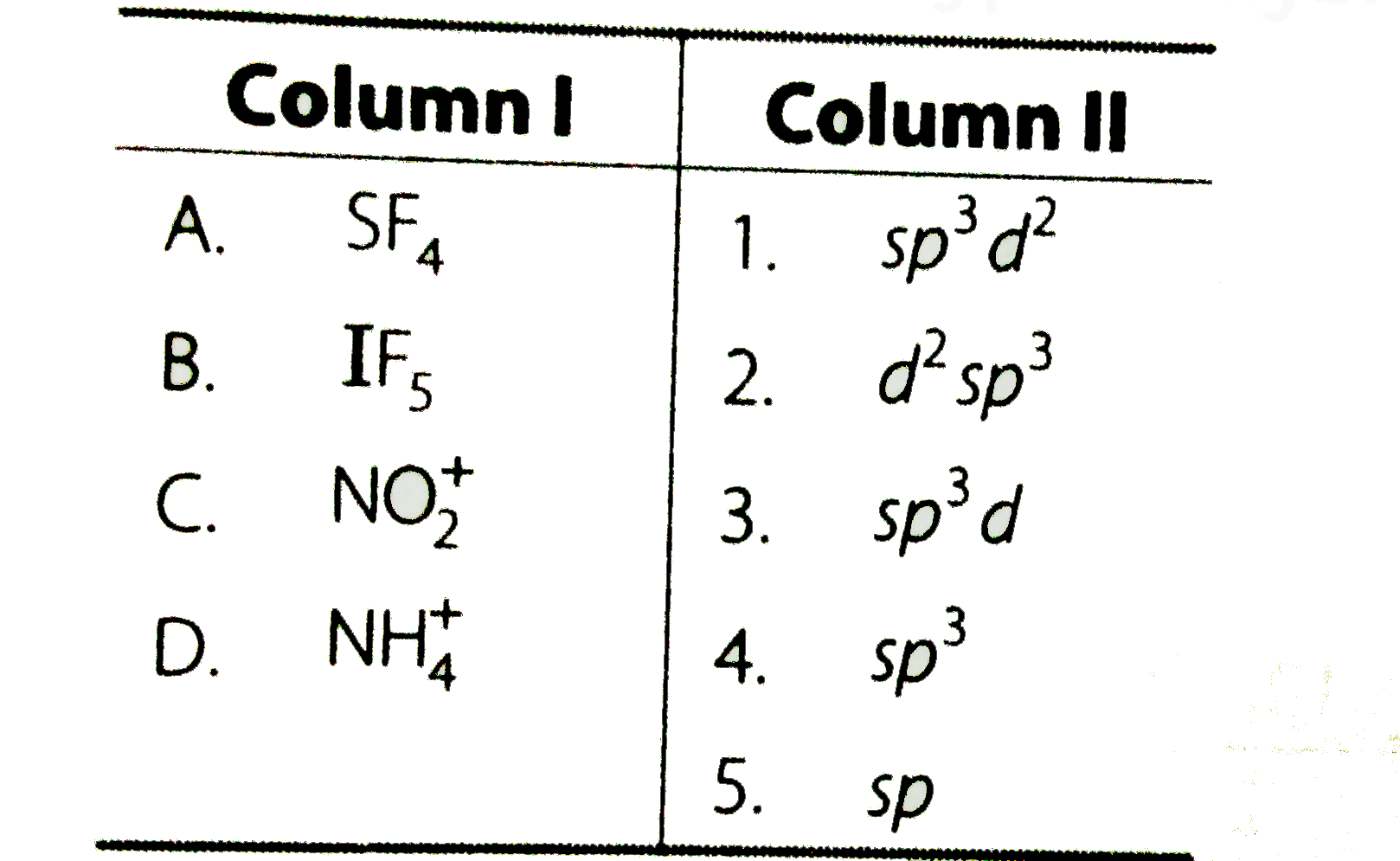
i-c, ii-a,iii-e, iv-d
i-a,ii-b,iii-c,iv-d
i-a,ii-b,iii-d,iv-c
i-a,ii-c,iii-e,iv-d
The correct Answer is:A
Step by step video, text & image solution for Match the species in Column I with the type of hybrid orbitals in Column II. by Chemistry experts to help you in doubts & scoring excellent marks in Class 11 exams.
Topper's Solved these Questions
- BOOK - NARAYNACHAPTER - CHEMICAL BONDING AND MOLECULAR STRUCTUREEXERCISE - EXERCISE -362videos
CHEMICAL BONDING AND MOLECULAR STRUCTURE
- BOOK - NARAYNACHAPTER - CARBONYL COMPOUNDSEXERCISE - LEVEL -VI99videos
CARBONYL COMPOUNDS
- BOOK - NARAYNACHAPTER - CHEMICAL EQUILIBRIUMEXERCISE - Exercise -IV33videos
CHEMICAL EQUILIBRIUM
Similar Questions
Knowledge Check
- Question 1 - Select One
Match the species in Column I with the bond order in Column II.
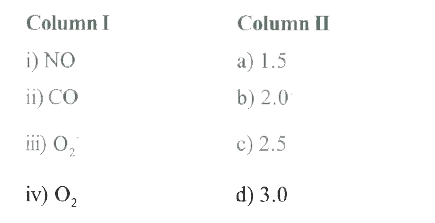 Ai-c,ii-d,iii-a,iv-bBi-a,ii-b,iii-c,iv-dCi-a,ii-b,iii-d,iv-cDi-a,ii-c,iii-e,iv-d
Ai-c,ii-d,iii-a,iv-bBi-a,ii-b,iii-c,iv-dCi-a,ii-b,iii-d,iv-cDi-a,ii-c,iii-e,iv-d
Match the shape of molecules in Column I with the type of hybridisation in Column II.
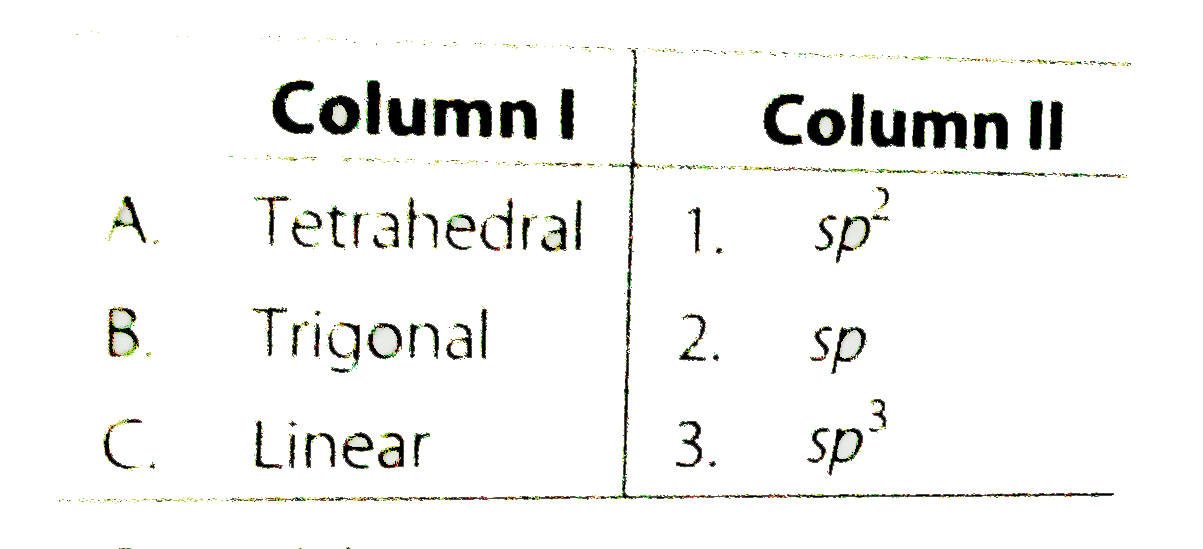 View Solution
View SolutionMatch the example given in Column I with the type of colloid given in Column II.
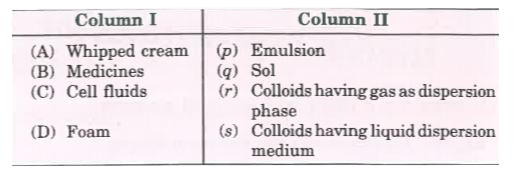 View Solution
View SolutionMatch the species in Column I with the bond order in Column II.
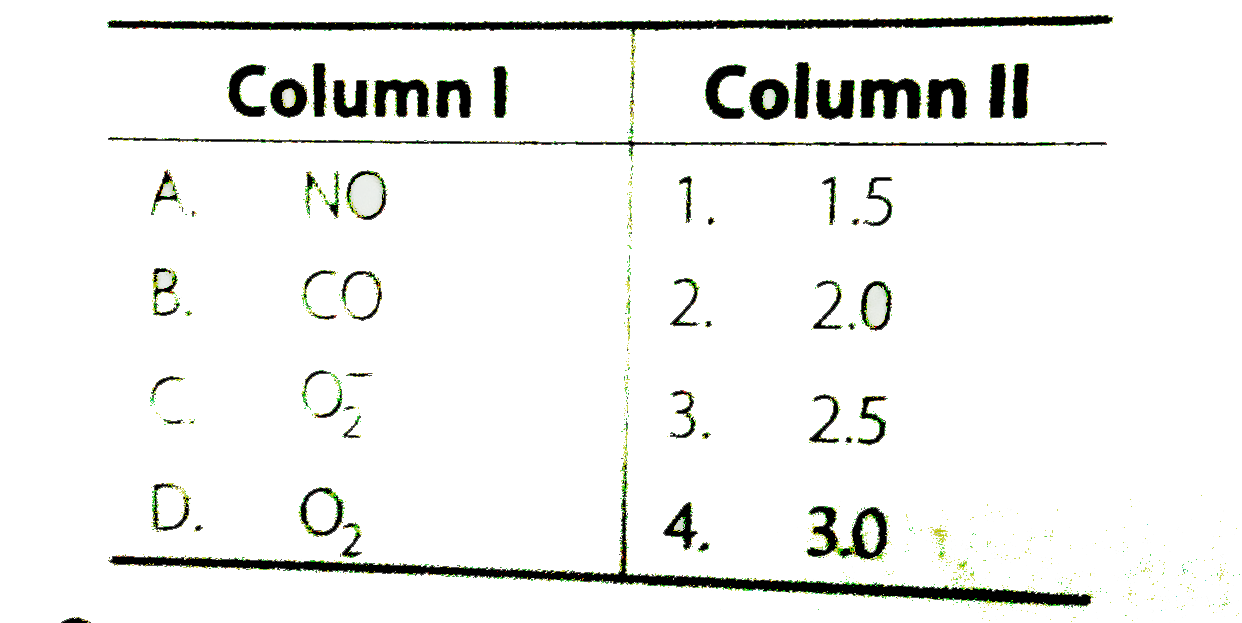 View Solution
View SolutionMatch the species in Column I with the geometry/shape in Column II.
 View Solution
View SolutionMatch the reactions given in Column I with the types of reactions given in Column II.
 View Solution
View SolutionMatch the reactions given in Column I with the reaction types in Column II.
 View Solution
View SolutionMatch the reactions given in Column I with the types of reactions given in Column II.
 View Solution
View Solution


